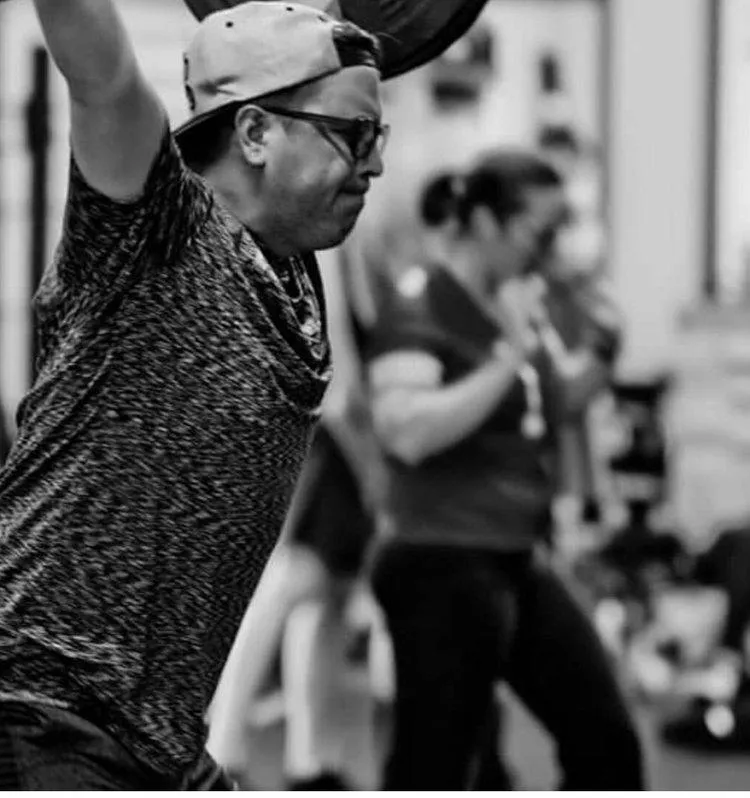Your Source for All Things Physical Therapy in Bend Oregon
The PhysioBLOG
Here, we share informative articles and insights that aim to help you achieve your full potential through our fitness-focused approach to rehabilitation. Our team is dedicated to providing you with valuable tips and techniques that can help you overcome any obstacle, whether you're recovering from an injury, surgery, or striving to build strength and wellness for life.
Stay up-to-date with our latest posts & empower yourself with elegantly simple techniques for optimal health & wellness.

The Runner’s Roadmap: Navigating Injuries and Enhancing Performance with PhysioFIT
Please Note: The information provided on our website is intended for general education and is not a substitute for professional medical advice. Each individual's situation and body are different. Therefore, what may work for one person may not work for another. We care about your well-being and advise you to reach out to us to discuss your specific needs before implementing any advice from our website. If you’d like to explore this more or would like to schedule a time with a physical therapist in Bend Oregon, contact us at PhysioFITBend.com
Key Takeaways:
Running offers numerous benefits for physical and mental health, promoting overall well-being.
The Runner's Roadmap provides guidance for managing running-related injuries and improving performance through PhysioFIT.
Having a comprehensive understanding of common running injuries helps runners identify and address potential issues early on.
PhysioFIT plays a crucial role in injury prevention and recovery, offering specialized programs and techniques tailored to runners' specific needs.
The Benefits of Running
The Runner's Path: Overcoming Injuries and Improving Performance
This article provides a comprehensive guide for runners on how to navigate injuries and enhance their performance. It explores strategies, exercises, and physiotherapy techniques tailored to address the specific needs of runners. The Runner's Path equips athletes with the tools and knowledge they need to overcome setbacks and reach their full potential.
In this guide, readers will discover tips and techniques to prevent common running injuries, such as shin splints and runner's knee. It offers insights into proper warm-ups, stretching routines, and strengthening exercises to build resilience and endurance. The Runner's Path also delves into the importance of correct running form and how optimizing technique can prevent future injuries and improve performance.
Moreover, the article delves into the role of physiotherapy in the runner's journey. It highlights the benefits of seeking professional guidance, such as personalized treatment plans and expert advice. By integrating physiotherapy into their training regimen, runners can effectively recover from injuries and enhance their performance on a long-term basis.
Exploring the Rewards and Advantages
Embarking on a running journey offers numerous benefits for both the body and mind. By engaging in this aerobic exercise, individuals can improve cardiovascular health, build endurance, and enhance overall fitness levels.
Furthermore, running promotes weight management and increases bone density, reducing the risk of osteoporosis. It also stimulates the release of endorphins, aiding in stress reduction and providing a natural mood boost. The versatility of running allows it to be tailored to individual preferences, whether it be on a treadmill, through scenic trails, or even around a local track here in beautiful Bend, Oregon.
To truly unlock the potential of running, it’s crucial to adopt proper form and technique. This can prevent injuries and optimize performance. By incorporating PhysioFIT techniques into your running routine, you can effectively address any existing injuries, strengthen weak areas, and improve joint stability. This holistic approach ensures a well-rounded fitness experience.
Understanding Common Running Injuries
Running injuries are a common occurrence among athletes and can significantly affect performance. By gaining a comprehensive understanding of the various injuries that can arise, athletes can better navigate their training routines and take appropriate steps to prevent and treat these injuries. This knowledge enables athletes to make informed decisions about their training, ultimately enhancing their overall performance.
Understanding common running injuries allows athletes to recognize the warning signs and symptoms associated with each injury. From the exhilarating rush of endorphins to the undeniable cardiovascular benefits, running is an athlete's haven. Yet, the repetitive nature of running can sometimes be a double-edged sword, leading to injuries that can sideline even the most seasoned runners. But fear not! Enter the realm of physical therapy, your trusted ally in navigating the world of running injuries. Let's dive into the most common running setbacks and discover how our expert physical therapists craft tailored strategies to get you back on track.
Runner's Knee: Dominating the list with a whopping 40% of running injuries, runner's knee, or patellofemoral pain, is a frequent adversary. Often stemming from a combination of inward foot rolling and weak upper leg muscles, this injury can make even simple activities like squatting or stair-climbing a challenge. Physical therapists often recommend standing hamstring and quadriceps stretches, quadriceps sets, and straight-leg raises.
Achilles Tendinopathy: Accounting for about 11% of running injuries, Achilles tendinopathy is a result of the Achilles tendon's irritation. Runners who often sprint or tackle hilly terrains are especially vulnerable. Initial treatments often involve rest, ice, and sometimes anti-inflammatory medications. This is followed by targeted stretching and strengthening exercises.
Plantar Fasciitis: Affecting 15% of runners, plantar fasciitis is an inflammation of the tendons connecting the heel to the ball of the foot. It's especially common among runners with specific foot arch types and those who stand for prolonged periods. While there's no magic bullet, a combination of ankle and plantar fascia stretches, night splints, and custom footwear inserts can make a world of difference.
Shin Splints: Often a result of diving back into running after a hiatus, shin splints are tears in the muscles surrounding the shinbone. Factors like excessive hip motion, a high BMI, and previous injuries can increase the risk. Rest and ice are the initial go-to remedies. Physical therapists might also recommend specific stretches, therapeutic massages, foot taping, and guidance on selecting the right running shoes.
In order to prevent common running injuries, athletes are also highly advised to incorporate proper warm-up and cool-down routines into their training sessions. Warming up prepares the body for physical activity by increasing blood flow to the muscles, loosening joints, and enhancing flexibility. Cooling down helps to gradually reduce heart rate and aid in the removal of waste products from the muscles. Both of these practices contribute to injury prevention by ensuring that the body is adequately prepared for the demands of running.
Additionally, athletes should focus on maintaining overall strength and flexibility. Engaging in strength training exercises that target muscles utilized during running can help prevent imbalances and reduce the risk of overuse injuries. Incorporating flexibility exercises, such as stretching and yoga, can also improve joint mobility and reduce muscle tension, further reducing the risk of injuries.
PhysioFIT's Crucial Role in Preventing and Recovering from Injuries
PhysioFIT plays a significant role in both preventing and recovering from injuries among runners. By utilizing the expert knowledge and guidance of our physiotherapists, athletes can enhance their performance and minimize the risk of debilitating injuries. This specialized program offers a wide range of exercises and techniques tailored to the specific needs of runners, focusing on strengthening key muscles, improving flexibility, and correcting biomechanical imbalances. With PhysioFIT, athletes can proactively address potential sources of injury and develop a resilient body capable of withstanding the demands of running.
To maximize the benefits of PhysioFIT, incorporating certain suggestions can significantly enhance injury prevention and recovery. First, a consistent regimen of targeted strength and conditioning exercises should be adopted to build overall muscle strength and endurance. Additionally, athletes should focus on incorporating appropriate rest and recovery periods into their training schedule, allowing the body to recuperate and repair itself. Lastly, ensuring proper nutrition and hydration plays a crucial role in both injury prevention and recovery, as it aids in the body's ability to heal and perform optimally.
By incorporating these suggestions, runners can fully harness the benefits of PhysioFIT and optimize their injury prevention and recovery efforts. PhysioFIT's tailored exercises, personalized assessments, and comprehensive approach provide runners with the necessary tools to prevent injuries and recover efficiently, enabling them to achieve peak performance and longevity in their running journey.
Conclusion
The integration of PhysioFIT in a runner's training regimen provides a comprehensive approach to optimizing performance and managing injuries. By leveraging tailored physiotherapy exercises and personalized training plans, PhysioFIT empowers runners to reach their peak potential while minimizing the risk of injuries.
PhysioFIT's ability to address specific needs and weaknesses of runners sets us apart. Through a meticulous assessment of individual biomechanics and running patterns, we can tailor exercise programs that target areas of improvement, creating a solid foundation for enhanced performance.
In addition to its injury prevention benefits, PhysioFIT's integration into a runner's routine has been shown to expedite recovery and rehabilitation post-injury. By providing targeted exercises and evidence-based strategies, the platform facilitates a faster return to running while reducing the likelihood of reinjury. The personalized approach ensures that runners receive the appropriate level of support and guidance throughout their recovery process. So if you’re looking to enhance your overall running experience, make sure to reach out to us at PhysioFIT today!
Five Facts
✅ Running can have a positive impact on cardiovascular, mental, and physical health.
✅ Runner's knee, or patellofemoral pain, is the most common running injury, affecting approximately 40% of runners.
✅ Achilles tendinopathy, characterized by tightening and irritation of the Achilles tendon, accounts for about 11% of all running injuries.
✅ Plantar fasciitis, which causes small tears and inflammation of the tendons connecting the heel to the ball of the foot, is the most common foot injury among runners, affecting around 15% of them.
✅ Shin splints, or medial tibial stress syndrome, can occur when runners resume the activity after a period of inactivity. It is characterized by tears in the muscles surrounding the shinbone and is influenced by factors such as excessive hip motion and previous running injuries.
FAQ
1. What are the benefits of running for mental and physical health?
Running has numerous benefits for mental and physical health. It improves cardiovascular fitness, boosts mood and mental well-being, helps manage weight, strengthens muscles and bones, and reduces the risk of chronic diseases like heart disease and diabetes.
2. How can a physical therapist help prevent or manage common running-related injuries?
A physical therapist can help prevent or manage common running-related injuries by providing personalized treatment plans. They can diagnose the injury, improve mobility, manage pain and chronic conditions, aid in injury recovery, and offer guidance to prevent future injuries and chronic diseases.
3. How can a physical therapist treat runner's knee?
Runner's knee, or patellofemoral pain, can be treated by a physical therapist. They may use exercises such as standing hamstring and quadriceps stretches, quadriceps sets, and straight-leg raises to strengthen the upper leg and thigh muscles. These exercises help alleviate pain and improve the condition of the knee.
4. What is the treatment for Achilles tendinopathy?
A physical therapist can provide treatment for Achilles tendinopathy, which may include rest, ice, and anti-inflammatory medicine for pain relief. They will also focus on instilling proper movement patterns and building muscle strength and balance, targeting the calf and Achilles area through stretching and strengthening exercises.
5. How can a physical therapist help with plantar fasciitis?
A physical therapist can assist with plantar fasciitis by developing a treatment plan that includes stretches for the ankle and plantar fascia, the use of a night splint to maintain proper ankle and toe positions, and fitted footwear inserts. They will provide guidance on managing inflammation, reducing pain, and promoting healing for the small tears in the tendons connecting the heel to the ball of the foot.
6. What are the common treatments for shin splints?
Shin splints, or medial tibial stress syndrome, can be treated by a physical therapist through rest and ice as the initial course of action. They may also recommend stretches targeting the affected muscles in the leg, calf, and foot, therapeutic massage, taping of the foot to reduce load, and provide suggestions for proper and more supportive running shoes to alleviate symptoms and promote healing.
Please Note: It's important to note that any exercises or techniques that are shared should be performed under the guidance of a qualified bend physical therapy expert to ensure correct technique and to prevent injuries. A physical therapist can provide a customized exercise program based on the individual's fitness level, goals, and any existing injuries or conditions. If you’d like to explore this more or would like to schedule a time with a physical therapist in Bend Oregon, contact us atPhysioFITBend.com

PhysioFIT
PhysioBlog
Ask The Experts

PT, MSPT, OCS, CF-L1

DPT, DNS cert, SFMA

B.Sc, EMT, CF-L1

PT, DPT
Copyright PhysioFIT 2023 . All Rights Reserved

